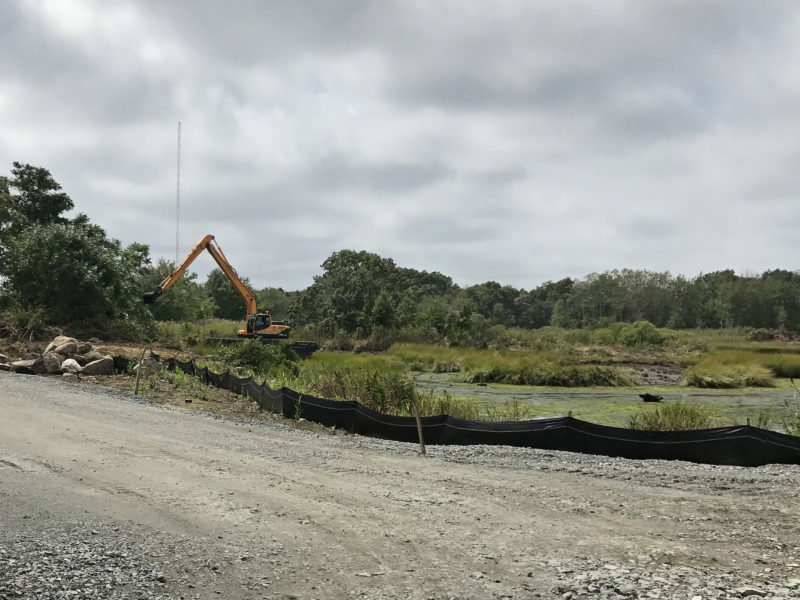PCBs removed from Marsh Island shoreline as part of New Bedford Harbor cleanup
As part of its decades-long New Bedford Harbor PCB cleanup, the U.S. Environmental Protection Agency has removed contamination from the shoreline of Marsh Island in Fairhaven – a Coalition-owned property that is planned to become an outdoor waterfront destination for local residents to explore.

EPA cleanup contractors removed contaminated sediment from the shoreline of Marsh Island late last year, replacing the dirty sediment with clean fill.
22-acre Marsh Island is the largest area of undeveloped, protected conservation land on inner New Bedford Harbor. The Coalition owns the south side of Marsh Island and holds a conservation restriction on the island’s north side, where the shoreline cleanup took place.
Although it’s called “Marsh Island,” the property is actually a peninsula today. It was once separated from the Fairhaven mainland by two tidal creeks and a salt marsh. Most of the property’s natural salt marshes were destroyed nearly 100 years ago when sediment dredged from the harbor was used to fill the island’s marshes – part of an estimated 134 acres of natural wetlands that were lost along the Acushnet River with the construction of textile mills.
Throughout the mid-20th century, chemical companies on the harbor dumped toxic contaminants called polychlorinated biphenyls (PCBs) into the water. PCBs are extremely harmful to fish and wildlife and have been proven to cause cancer in humans. This toxic pollution still lingers in the sediments at the bottom of the harbor – particularly in the upper harbor and the Acushnet River near Marsh Island.
EPA cleanup contractors removed contaminated sediment along the shoreline on the north side of the island and replaced it with clean soil. They are also adding native marsh plants to revegetate these areas.
The PCB cleanup is one step in a larger, long-term plan to restore Marsh Island’s salt marshes and improve the harbor’s natural environment. Restoring Marsh Island would also expand waterfront access on inner New Bedford Harbor, with trails leading visitors to the shoreline and rock outcrops that offer commanding views of the harbor.
The National Oceanic and Atmospheric Administration’s Restoration Center is leading the effort to restore Marsh Island. Now with the PCBs removed, NOAA can move forward on a strategy to advance its 15-year-old restoration plans.